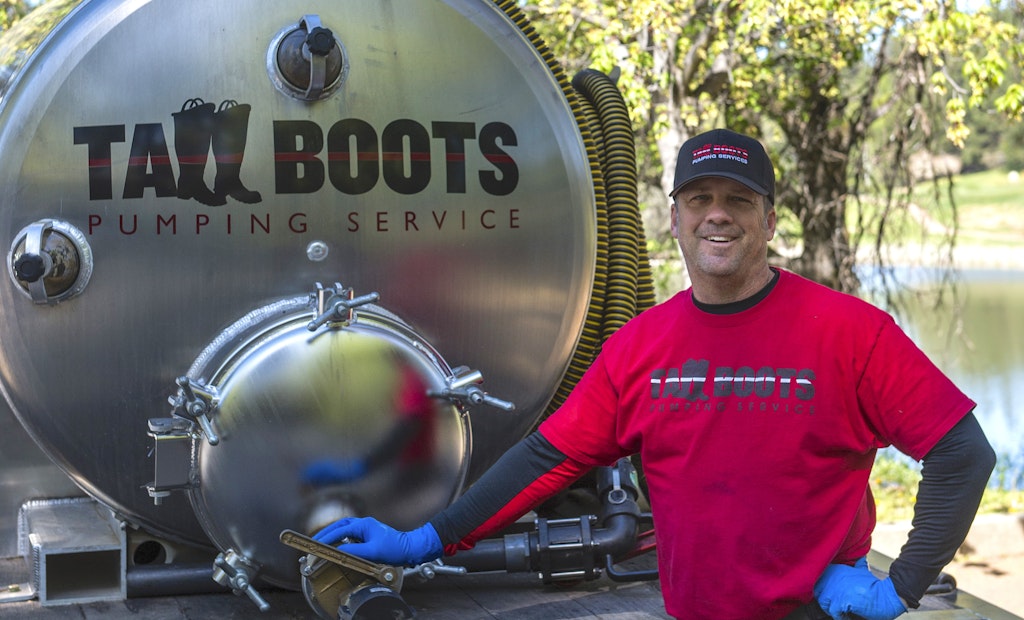Interested in Onsite Systems?
Get Onsite Systems articles, news and videos right in your inbox! Sign up now.
Onsite Systems + Get AlertsWhen Zack Ray worked for a septic system service company in Texas, he noted that most customers’ tanks had risers. Now, as co-owner of Tall Boots Pumping Service in Grass Valley, California, he finds close to 70 percent of tanks need to be dug up for service. Locating those tanks can be a challenge.
Often, before going to a job site, Ray and his wife, Denise, ask the county health department for records on the system and property.
“Sometimes they have them, and sometimes they don’t. In this area, there are tanks hundreds of feet away from the house, out in the middle of a field, that haven’t been touched for 30 or 40 years. The terrain is odd. I could be standing in a house looking out where I know the septic tank is, and there could be a field full of boulders. Where in the world did they put a tank in?”
When no county records are available, Ray sometimes searches with a manual probe. More often, he uses a RIDGID NaviTrack Scout Model 19248 locator. “My main way of locating tanks is with that locator and either a flushable sonde or a sonde on a cable.”
The NaviTrack Scout uses multidirectional locating technology. The multidirectional antenna sees the entire signal throughout the locating process — there are no nulls or false peaks. The device verifies the locate using a micromapping display to mark distinctive poles in front of and behind the target. Depth is calculated and displayed when the user is over the target. For septic system work, the device locates the RIDGID flushable float sonde.
Ray uses the same equipment combinations for pipe tracing when required. The display shows the real-time signal strength with no need to adjust the gain. It also provides a map to trace energized lines at four frequencies, as well as passive AC.
Besides locating challenges, Tall Boots often must service septic tanks that have been neglected. “We’ve encountered tanks that apparently haven’t been touched for 30 or 40 years,” Ray says. In those and some less extreme cases, a crust layer in the tank needs to be broken down and the tank contents mixed.
That’s why the company considers its Crust Busters tank agitator such a valuable tool. It breaks up and circulates, converting the tank contents into a liquid form for easier pumping. It mixes residential tanks from 1,000 to 2,500 gallons in five minutes or less. Blades and high-power shaft rotation lift and remove solids and chunks off the tank bottom so the tank can be cleaned without backflushing.






